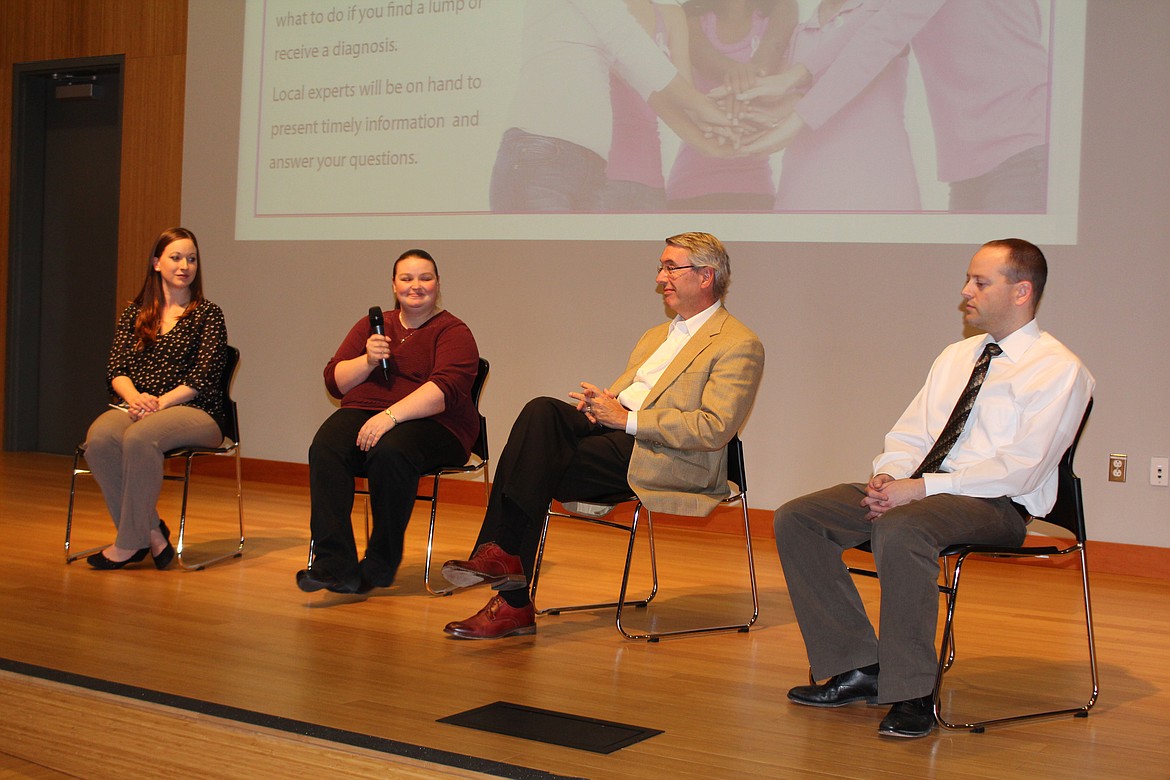Mammograms important to timely detection of breast cancer
MOSES LAKE — Doctors and a diagnostic imaging technician talked about what women can expect when they undergo a mammogram, and what happens if something is found during a seminar about breast cancer Oct. 12.
“Breast Friends Forever” was sponsored by the Samaritan Healthcare Foundation.
Samaritan Hospital recently purchased a 3D mammography system, the latest technology for breast cancer diagnosis. It provides a more detailed look at the tissue, said Krystal Schafer, the hospital's mammography coordinator.
Even the most advanced diagnostic tools still require breast compression, Schafer said. Some cancers are detected when they're as small as a grain of sand, she added, and without the compression they could be missed.
Women are asked not to wear deodorant, in order to get a better image, she said. A mammogram involves about four images. Recommendations vary as to when women should start getting mammograms, and how often they should have them, Schafer said. Dr. Lexie Zuver, the hospital's new family practice physician, said women should talk with the doctor at about 40 years of age, to determine the best time to start. All women should start having a yearly mammogram at 45 years of age, she said. Between 45 and 80 years of age women should have a mammogram every year, Zuver said.
In answer to a question from the audience, Dr. Thomas Tucker said it's not unusual for one breast to be bigger than the other. The crucial factor is a sudden change in the breast, he said, and that's when women should seek consultation with a doctor. Tucker is an oncologist (a cancer specialist) with Confluence Health in Wenatchee.
Zuver said consultation with the woman's primary care physician is the first step if something is discovered on the mammogram. Just because something is different doesn't mean it's cancer, she added.
The first mammogram is followed up with more investigation, more images, possibly a biopsy, which means taking tissue and testing it.
If it's determined to be malignant, an oncologist like Tucker is the next step. Tucker said he tells patients the No. 1 goal is to cure the cancer, and there are two parts to a cure.
The first is to cure the cancer at the source, in the breast. That can involve anything from removing the lump (called a lumpectomy) up to removing the entire breast (mastectomy). Follow-up treatments usually are prescribed.
The second part is to cure cancer anywhere else in the body, Tucker said. Treatment for that can involve various therapies, including chemotherapy.
Back in the day, about 40 years ago, there was no effective chemo for breast cancer, he said. When effective chemo was developed, it was prescribed to most patients whether it helped them or not, Tucker added. Doctors have gotten much better at determining when chemo will be effective.
General surgeon Eric Ebaugh said the most common question women ask him is the best surgical option for their condition. If a cancer is bigger than 5 centimeters he recommends a mastectomy, he said. In addition, lymph nodes can be removed if the cancer has spread that far. Usually that's checked with a biopsy before surgery, he said.
Cheryl Schweizer can be reached at education@columbiabasinherald.com.



